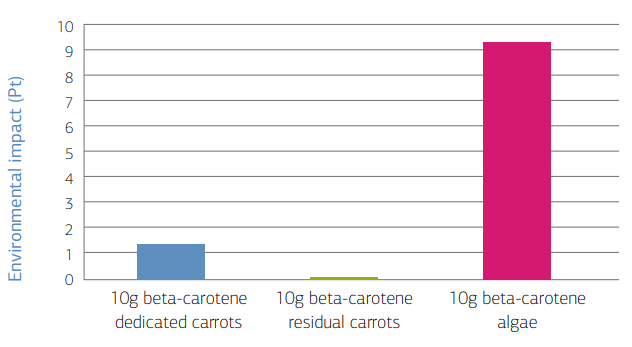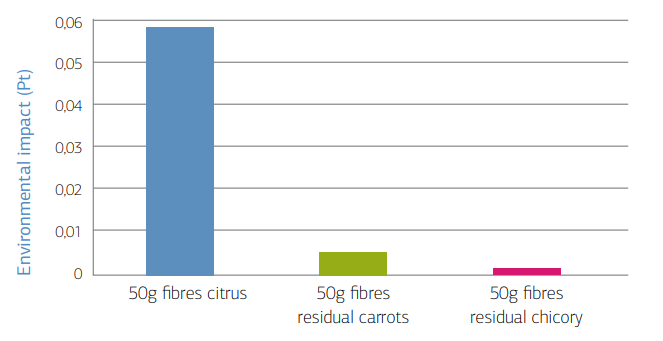Unlocking the value of food waste streams
With the goal of maximizing value of food waste streams, PRé and the Wageningen University assessed the environmental impacts of three different production methods of dietary fibers and beta-carotene. Would the assessment uncover the business case for using residual carrots from vegetable food waste streams?
About
The primary production, trade and industrial processing of vegetables result in a large proportion of vegetable waste in food waste streams. Nowadays, this vegetable waste is often fermented, composted, used as feed for animals or used to obtain sustainable energy. However, the product waste streams contain valuable components, such as vitamins, minerals, and carotenes. Therefore, several companies and the Wageningen research institute Food & Biobased Research collaborated within the Infinity Vegetables public-private partnership to increase the value of waste streams originating from vegetable production. With the underlying idea of ‘food should remain food’, their goal was to add as much value as possible to vegetable waste streams following the waste hierarchy of Moerman.
Sometimes, making production processes more sustainable is not so much about optimizing the individual processes as it is about cleverly chaining processes together. Finding out that the waste of another production process could serve as input for yours opens up great possibilities, and food waste streams are often great places to look for such opportunities. This is the basis of visionary new business models, such as circular economy. However, it is important not to get carried away by the idea without first checking whether this chaining also makes sense from an economic and environmental perspective.
Challenge
For the Infinity Vegetables project, it was important to check whether using vegetable waste streams like residual carrots was an attractive idea from an environmental perspective, besides the economic advantages. These residual carrots could be used to produce dietary fiber and beta-carotene.
PRé was asked to perform a life cycle analysis on different production chains of dietary fibers and beta-carotene. The purpose of the LCA was to see how the environmental impacts of beta-carotene and fiber production from residual carrots compare to other production technologies, such as production from carrots that were specifically grown for this purpose, the so-called dedicated carrots. Six production technologies were compared:
Beta-carotene
- Dedicated carrots
- Residual carrots
- Algae
Fibers
- Citrus
- Residual carrots
- Residual chicory
Within the Infinity Vegetables project, primary data was collected in the field and taken from literature and calculations from experts. Sensitivity analyses were performed on the most important input values and model choices.
Solution
A cradle-to-gate comparison of beta-carotene from residual carrots, dedicated carrots, and algae showed clear differences between the production technologies. At the moment, the standard production method for beta-carotene is from dedicated carrots. The environmental impact of beta-carotene production from residual carrots was much lower than from dedicated carrots. The environmental impact of beta-carotene production from algae is much higher than other production methods, namely a factor of 7 compared to dedicated carrots. This can be explained by the use of oil in the extraction process. Despite the limited data, the comparison showed convincing potential for the production of beta-carotene from residual carrots.

The standard production method for fibers is currently from citrus. A comparison of fiber production from citrus, residual chicory from inulin production, and residual carrots showed that fibers from citrus have the largest impact. Compared to this, fibers from residual chicory have about 3% of the environmental impact and fibers from residual carrots about 8% of the impact. Most of the impact from citrus-based fiber production comes from the electricity used to pulverize the citrus peel and press the crushed citrus peel.

Benefits
- The ‘Infinity Foods’ partners gained valuable insight into the environmental performance and the hotspots of the different production methods.
- The cradle-to-gate LCAs showed potential for getting value from residual carrots and residual chicory from inulin production. The residual vegetables could be used for production of beta-carotene (carrots) and fibers (carrots and chicory). Beta-carotene production from algae and fiber production from citrus appeared less favorable.
- The insights of this study can be used when setting up a production facility for getting value out of residual vegetables.
